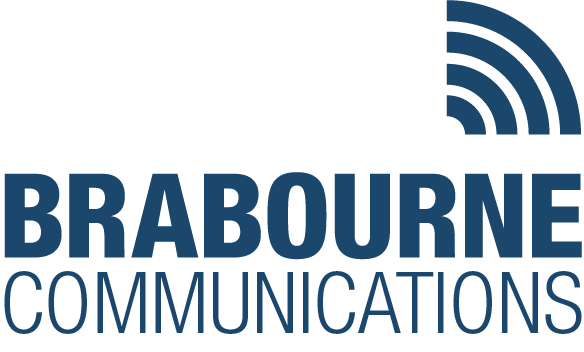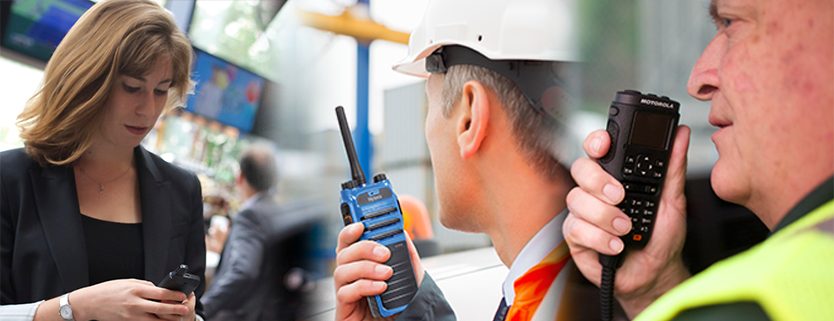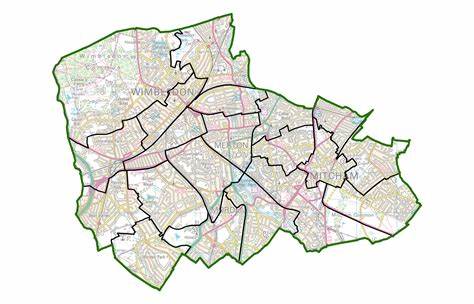Have you ever thought of the benefits of staying in touch with your friends when out and about? Whether you are hiking, camping, skiing, cycling or trekking, using two-way radios is fun and keeps you in touch.
Modern two-way radios are available to cover almost any application. Below are some of the things to consider before purchasing your first set of walkie talkies.
Licence or licence free?
The quickest way to get started is to choose a pair [or more] of licence free radios. These are available in consumer and professional versions. But which you use depends on the type and intensity of use you are going to put them to. If you want more coverage [range] and higher transmit power then you should consider licenced radios.
Consumer
These are low cost portable radios that offer many of the features of a fully licensed radio. Most importantly there’s no need to apply and pay for a licence. Typically these are supplied as twin packs and include all the elements you need to get started.
Professional
There are an increasing number of radio manufacturers who have introduced licence free versions of their licensed radios. This really means you get the advantages of a licence free radio in the housing of a professional radio. Furthermore you get all the inherent mechanical ruggedness this brings. You can also extend the range of licenced two-way radios by incorporating base stations and repeaters.
Analogue or Digital?
Whether you choose licence free or licenced radios you can select either analogue or digital radios. More and more manufacturers are introducing a digital range. Eventually these will replace the analogue radios currently available. Above all, a digital radio will operate in analogue mode if required so you can mix and match radios easily. No need to chuck away what you already have!
There are a number of key advantages with digital radios though. These include clearer audio, longer range, greater privacy and the ability to combine voice and data in the same radio. Some digital radios also offer twice the effective channel capacity. In other word’s you can use one physical channel to hold two different radio calls simultaneously.
Digital radios are more expensive, so you need to consider your requirements before choosing the best technology for you.
Two-way Radio Features To Consider
Size and Weight
Select radios by their size, shape and weight. Also, consider the activity you are going to be doing when using the radios. Some are designed to be used by people wearing gloves. Whilst ergonomics are important, also consider the weather conditions you may encounter. Some licence free radios are completely submersible. If you are going to be doing any kind of water sports then these are the ones to choose.
Two-way Radio Channels
All licence free radios that are legal to use in Europe have 8 channels. These channels can be effectively increased in number by adding a tone frequency to each channel. These are known as CTCSS tones or DCS codes [see Analogue or Digital]. So if you find yourself in an area where there are other radio users you can easily change channel. This ensures you only hear the people you want to listen to. You’ll be pleased to learn that the UK leaving the EU will not affect the use of any licence free radios you may already have or decide to buy.
Don’t confuse European licence free radios, also known as PMR446, with the American FRS [Family Radio Service] radios. FRS radios are much more powerful and operate on different frequencies. If you purchase these on holiday or online you must not use them in Europe. They may interfere with licensed radio users, including the emergency services.
Wattage and Range of Coverage
How long is a piece of string? It is impossible to guarantee the range of two radios, licensed or otherwise, as radio waves are affected by numerous factors including the frequency used, local topography and even the weather conditions.
Licence free radios are limited in their transmit power to 500mw, and the antennas fitted to these radios are also bonded into place so that high performance antennas cannot be substituted. Nonetheless in line of sight conditions it should be possible to get up to a couple of miles range between handsets which is ideal for most outdoor activities
Unlike licenced radios PMR446 radios cannot be used with any fixed infrastructure –so no base stations or repeaters can be used
Licenced radios [portables] can be purchased to operate on different frequency bands – both UHF and VHF. There are important differences. VHF radios transmit at up to 5 watts so 10 times more powerful than PMR446 models. They will also perform better in open country and less well in urban built up environments than UHF radios
Using licenced radios in conjunction with a base station or repeater can increase the range to 10- 15 miles in the right conditions.
Interference & Privacy
As already mentioned, using the CTCSS tones or DCS codes you can easily find a clear channel for you and your friends to use without having to listen to other radio users. This becomes more difficult where you find a concentration of radio users and this poses a couple of problems.
First of all if you want to increase the chances of being able to use a clear channel then choose a licenced radio. Licensing can be as cheap as £75.00 every 5 years in the UK and you don’t need to be a business to get one. It takes a few weeks for your licence to arrive and you don’t need to wait to get it before using your two-way radios.
Secondly, to improve privacy select a radio that comes with some form of integrated encryption. These vary from simple voice inversion or scrambling on licence free radios right up to highly secure military grade encryption such as 256 bit AES which will only be found on licenced radios. Also it is worthwhile remembering that if you select a digital radio it is by definition more secure than an analogue model. This is because of the way audio is processed between the radios making it much harder to listen in.
Calling and Paging Features
When you make a radio call you depress the push to talk switch [PTT] and you are instantly connected to the radio or radios that you want to speak to. This may not always be convenient for the called party so most radios have a capability to alert the user of an incoming call. A bit like a telephone ring tone. Depending on the type of radio the ID of the calling party may be displayed on the radio as well.
Scanning
This allows you to move through channels in order to find the one that your group is using. You can also use this feature to quickly locate an “empty” channel for your group to use. Some radios have advanced scanning features whereby you can prioritize a particular channel or channels to ensure that you don’t miss particular calls.
Keypad Lock
This allows you to lock your settings in order to prevent them from accidentally getting changed as you go about your outdoor activities.
VOX
The voice-activated (or “VOX”) feature begins transmitting automatically when you speak in the direction of the radio microphone, thus letting you operate it hands-free. In order to benefit from this feature you will need to select an appropriate audio accessory as the microphone will need to be positioned close to your mouth to be effective.
Mountain bikers and skiers find this to be a useful function. VOX is also very popular with motorcyclists and off roaders. VOX systems vary widely in quality and they take a little getting used to as the first part of the first word can get ‘chopped’ off as the transmitter powers up. As with most things practice makes perfect!
Audio Accessories
Accessory connectors on the radio for microphones, headphones and microphone/headphone combinations allow for convenient operation of the radio. A huge range of accessories for most popular radios can be found on our site – www.twowayaccessories.com . This is ideal for active sports—skiing, kayaking, cycling—where you might not be able to stop and answer the call.
Two-way Radio Batteries
Most licence free two-way radios run on AA or AAA batteries and are designed to accept disposable alkaline batteries or rechargeable nickel-metal hydride (NiMH) or lithium-ion batteries. Others come with their own rechargeable battery packs. Battery chargers can also be supplied to charge multiple quantities of radios, typically single, dual or six-way chargers are commonly available. Some radio models are also available with in-car chargers making them even easier to use whilst on the move.
In general, the higher a radio’s power output, the faster it will drain your batteries so look for radio models that include a battery saving circuit. Many licenced radios have the capability of different transmit power levels on each channel and some are now being made with ‘intelligent’ batteries whereby the radio can inform you in real time on the condition of the battery.
Summary
Choosing the right radio for you and your particular type of use is important. We offer a comprehensive range of two-way radios and accessories designed to meet the specific needs of all users. Our team of experts are always on hand to help explain the pro’s and cons’ of different models to ensure you receive the best overall solution. Visit our sister site at https://www.twowayaccessories.com/. Furthermore you can see how two way radio can benefit your business by reading about some of our case studies here https://www.brabournecommunications.com/case-studies-motorola-hytera-communications-installation-network-coverage/




